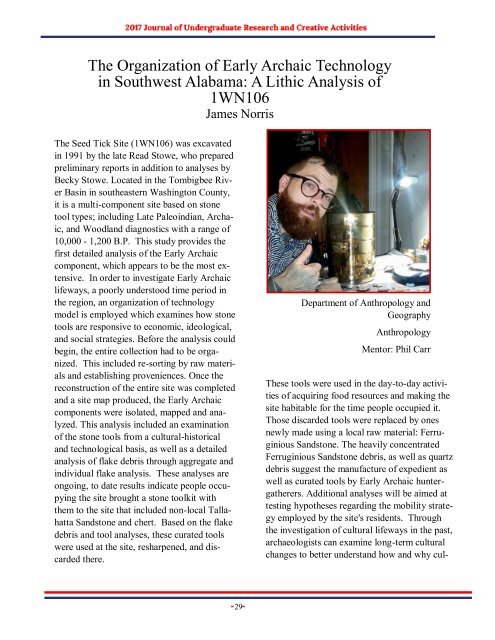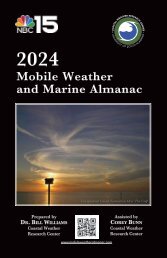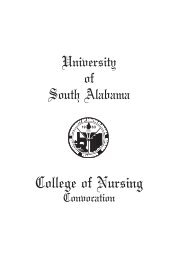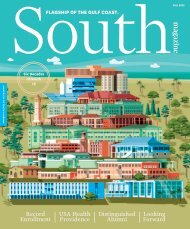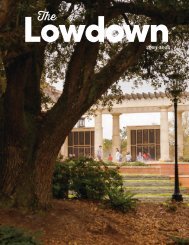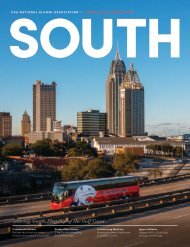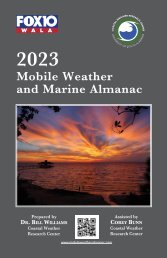JOURACA_SP_2017
Create successful ePaper yourself
Turn your PDF publications into a flip-book with our unique Google optimized e-Paper software.
The Organization of Early Archaic Technology<br />
in Southwest Alabama: A Lithic Analysis of<br />
1WN106<br />
James Norris<br />
The Seed Tick Site (1WN106) was excavated<br />
in 1991 by the late Read Stowe, who prepared<br />
preliminary reports in addition to analyses by<br />
Becky Stowe. Located in the Tombigbee River<br />
Basin in southeastern Washington County,<br />
it is a multi-component site based on stone<br />
tool types; including Late Paleoindian, Archaic,<br />
and Woodland diagnostics with a range of<br />
10,000 - 1,200 B.P. This study provides the<br />
first detailed analysis of the Early Archaic<br />
component, which appears to be the most extensive.<br />
In order to investigate Early Archaic<br />
lifeways, a poorly understood time period in<br />
the region, an organization of technology<br />
model is employed which examines how stone<br />
tools are responsive to economic, ideological,<br />
and social strategies. Before the analysis could<br />
begin, the entire collection had to be organized.<br />
This included re-sorting by raw materials<br />
and establishing proveniences. Once the<br />
reconstruction of the entire site was completed<br />
and a site map produced, the Early Archaic<br />
components were isolated, mapped and analyzed.<br />
This analysis included an examination<br />
of the stone tools from a cultural-historical<br />
and technological basis, as well as a detailed<br />
analysis of flake debris through aggregate and<br />
individual flake analysis. These analyses are<br />
ongoing, to date results indicate people occupying<br />
the site brought a stone toolkit with<br />
them to the site that included non-local Tallahatta<br />
Sandstone and chert. Based on the flake<br />
debris and tool analyses, these curated tools<br />
were used at the site, resharpened, and discarded<br />
there.<br />
Department of Anthropology and<br />
Geography<br />
Anthropology<br />
Mentor: Phil Carr<br />
These tools were used in the day-to-day activities<br />
of acquiring food resources and making the<br />
site habitable for the time people occupied it.<br />
Those discarded tools were replaced by ones<br />
newly made using a local raw material: Ferruginious<br />
Sandstone. The heavily concentrated<br />
Ferruginious Sandstone debris, as well as quartz<br />
debris suggest the manufacture of expedient as<br />
well as curated tools by Early Archaic huntergatherers.<br />
Additional analyses will be aimed at<br />
testing hypotheses regarding the mobility strategy<br />
employed by the site's residents. Through<br />
the investigation of cultural lifeways in the past,<br />
archaeologists can examine long-term cultural<br />
changes to better understand how and why cul-<br />
29


